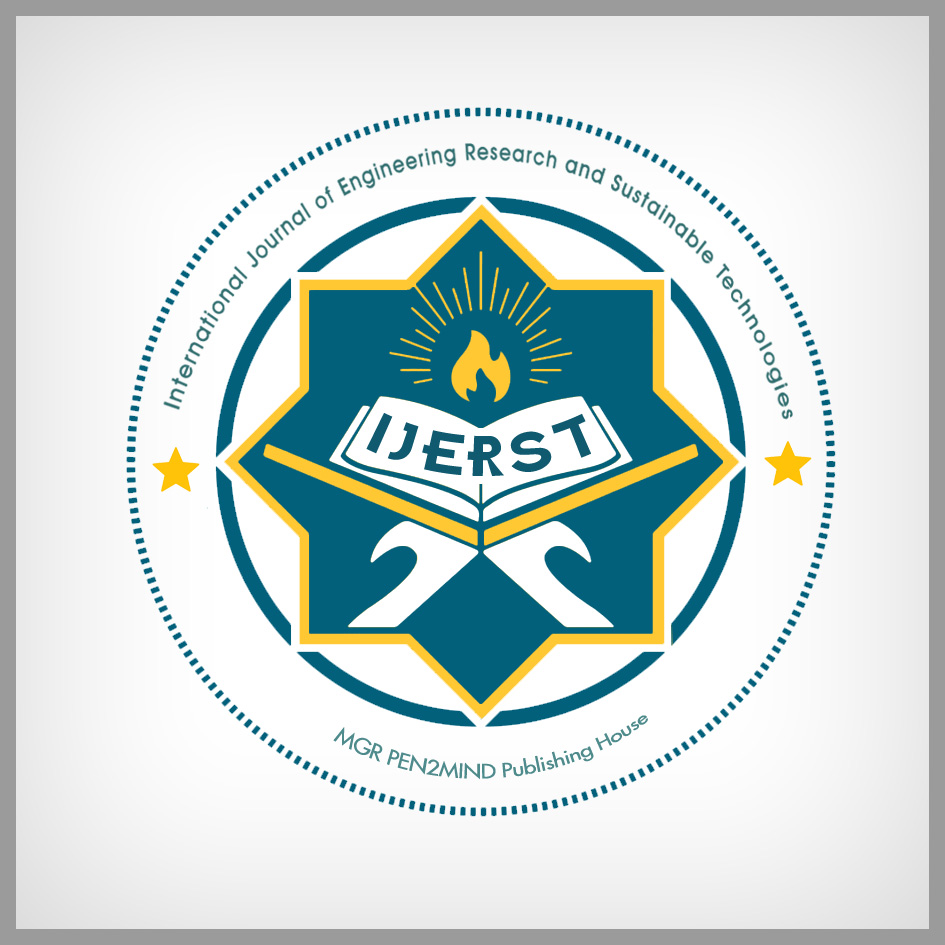INNOVATIVE LIFI BASED VIDEO TRANSMISSION: A HIGH-SPEED OPTICAL WIRELESS COMMUNICATION APPROACH
DOI:
https://doi.org/10.63458/ijerst.v3i3.119Keywords:
Li-Fi, Video Transmission, Visible Light Communication, Optical Wireless Communication, High- Speed Data Transfer.Abstract
The increasing demand for high-speed data transmission has led to the exploration of alternative wireless communication technologies. Li-Fi (Light Fidelity) is a promising optical wireless communication system that leverages visible light for data transfer. Unlike traditional radio-frequency (RF) communication systems, Li-Fi offers significant advantages, including higher bandwidth, enhanced security, and minimal electromagnetic interference. This paper focuses on the implementation of video transmission using Li- Fi technology, a potential breakthrough in wireless communication. By modulating light intensity with high-speed variations, data can be transmitted effectively, achieving high bandwidth and secure communication. The study explores system architecture, challenges, and performance evaluations, highlighting the feasibility of Li-Fi for video streaming applications. Furthermore, the research evaluates different modulation techniques, signal processing methods, and real- world applications where Li-Fi can be effectively deployed for high-definition video streaming. The findings suggest that Li-Fi could be a game-changer in multimedia communication, with promising applications in smart homes, healthcare, and secure defense systems.
References
Karvinen, K.,& Lind, K. (2015). Design and Implementation of a Li-Fi System for Communication in Visible Light. IEEE Transactions on Consumer Electronics, 61(2), 249- 256.
Singh, R., & Sharma, S. (2017). A Survey on Li-Fi: Technology, Applications, and Research Trends. International Journal of Advanced Research in Computer Science and Software Engineering, 7(8), 1-5. DOI: https://doi.org/10.23956/ijarcsse.v7i8.8
Khare, A., & Bansal, R. (2016). Li-Fi Technology: A Survey of Research Directions. International Journal of Engineering and Technology, 8(6), 1070-1075.
Bansal, V., & Gupta, R. (2016). A Study on Li-Fi Technology and Its Future Applications. International Journal of Advanced Research in Computer Science, 7(5), 150-154.
vFadel, K., & Fattah, A. (2019). High-Speed Optical Wireless Communication Using Li-Fi. IEEE Communications Magazine, 57(3), 84-90.
Kumar, S., & Gupta, R. (2017). Li-Fi Technology: A Future of Wireless Communication. International Journal of Engineering Research and Applications, 7(4), 61-65.
Ali, M., & Aziz, T. (2018). Li-Fi Technology: A New Era in Wireless Communication. IEEE Access, 6, 18080-18088.
Naderi, Y., & Ibrikci, T. (2020). Visible Light Communication and Li-Fi Technology: A Survey and Applications. Journal of Optical Communications and Networking, 12(9), 1056-1067.
Ramesh, G., & Viswanathan, R. (2017). Li-Fi Technology and Its Application in Wireless Communication. International Journal of Computer Science and Engineering, 5(6), 257-261.
Fouladgar, S. A., & Zohdy, M. A. (2018). Li-Fi: A Revolutionary Technology for Wireless Communications. International Journal of Computer Applications, 181(1), 12-16.
Haider, A., & Khurshid, A. (2019). Li-Fi Based Data Communication System: A Comprehensive Review. Wireless Personal Communications, 105(2), 831-843.
Zhang, Q., & Liu, X. (2021). Li-Fi and Its Applications in the Internet of Things. International Journal of Communication Systems, 34(7), e4649.
Mahfouz, A., & Taha, M. (2020). Performance Evaluation of Li-Fi Communication System for High Data Rate Transmission. IEEE Transactions on Wireless Communications, 19(5), 3130-3141.
Kumar, V., & Paliwal, R. (2020). Real-Time Video Transmission Using Li-Fi Technology. 2020 IEEE International Conference on Electronics, Communication, and Aerospace Technology, 246-251.
Downloads
Published
How to Cite
Issue
Section
ARK
License
Copyright (c) 2025 M. Naresh, K. Kullai Babu, M. Siva Reddy

This work is licensed under a Creative Commons Attribution 4.0 International License.
License Statement
This work is licensed under a Creative Commons Attribution 4.0 International License (CC BY 4.0).
Authors retain copyright of their articles and grant International Journal of Engineering Research in Science and Technology (IJERST) the right of first publication.
This license permits unrestricted use, distribution, and reproduction in any medium, provided the original author and source are credited.
The journal encourages open access and supports the global exchange of knowledge.




